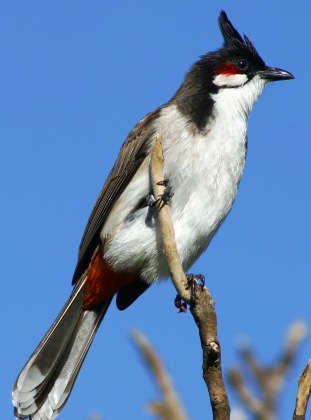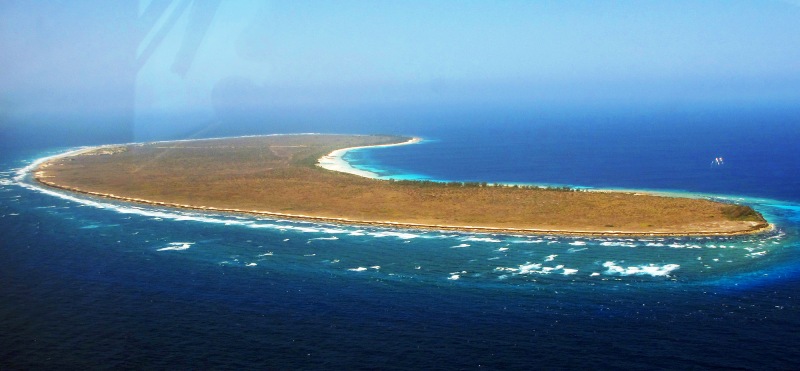Introduced red-whiskered bulbul eradicated from Seychelles |09 February 2015
 The Seychelles Islands Foundation (SIF) has announced the eradication of the introduced red-whiskered bulbul from the island of Assumption, and therefore from Seychelles.
The Seychelles Islands Foundation (SIF) has announced the eradication of the introduced red-whiskered bulbul from the island of Assumption, and therefore from Seychelles.
This marks the first successful large-scale introduced bird eradication in the world.
The red-whiskered bulbul (Pycnonotus jocosus), native to Asia, is considered invasive in other parts of the world. The species was introduced to Assumption in 1977 from Mauritius. In only three decades, the population on Assumption grew from around six individuals to several thousand birds. The species’ presence on Assumption was soon considered a serious threat to the biodiversity of nearby Aldabra Atoll, a Unesco World Heritage Site managed by SIF, which lies only 27 km away at its closest point. At that time, Aldabra had the status of being the largest tropical island with no introduced bird species. To protect Aldabra’s native species, conservationists called for the eradication of the bulbul from Assumption as early as the 1980s. Potential threats from the red-whiskered bulbul to Aldabra included competition for food with native bird species, potential hybridisation with the native bulbul, and transmission of novel diseases. The threats were nearly realised when a red-whiskered bulbul was discovered in a remote part of Aldabra in early 2012 but the bird was successfully targetted by the SIF team in July 2013.
In collaboration with Islands Development Company and Island Conservation Society, SIF launched an eradication programme for the red-whiskered bulbul on Assumption in January 2012, after securing financial support from the European Union. A combination of mist-netting and shooting was used to target 5,279 bulbuls over a three-year period with a local and international team of three to ten staff. Only two bulbuls remained on the island after mid-May 2014. The penultimate bulbul was shot on November 3, 2014 and the last bird targeted on December 18. The team has since spent six weeks repeatedly combing the 11km2 island of Assumption for signs of any remaining birds and this week confirmed that there are no other red-whiskered bulbuls on the island.
The current team of four, headed by Seychellois team Leader Jessica Moumou, with hunters from New Zealand, the UK and Canada, were unanimous in declaring success. Jessica, after over two years of work on the eradication, said, “I’m confident that we are very much done with the bulbul!”.
Nick Page, a hunter from New Zealand who shot the two last bulbuls, said he’s “very confident in stating that the entire population has been removed” and Pete Haverson, a UK-based professional hunter and conservationist who has worked on the project for 2.5 years, claimed that he is “100% positive that we have done it”.
The team cited their extensive coverage and knowledge of the island, the long period of time with very few remaining bulbuls, and the bulbuls’ highly social and vocal behaviour as reasons for their certainty.
Within Seychelles, the red-whiskered bulbul occurred only on Assumption and briefly on Aldabra so its removal from both islands also marks its eradication from the entire country. As the first large-scale avian eradication in the world, the success is a milestone in international conservation and invasive species management and should open the way for introduced bird eradication operations on islands worldwide.

Contributed by SIF




